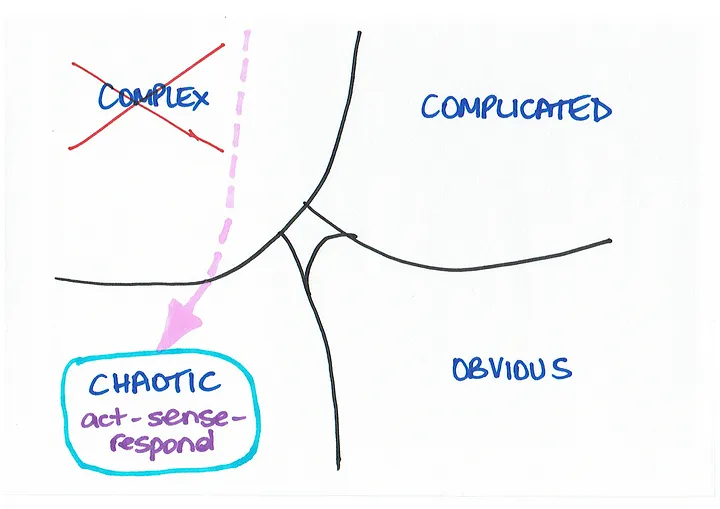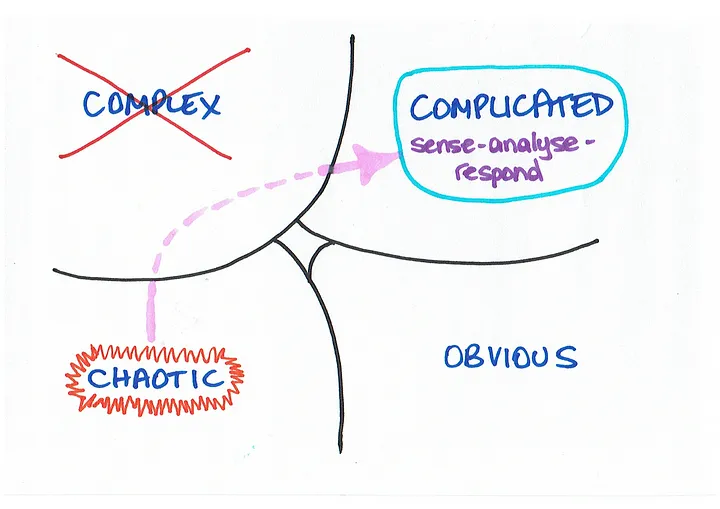Personal Cynefin - decision making and empathy
This morning I attended one of Agile Brisbane’s Lean Coffee events. It’s an excellent group with a diverse membership where you can be assured you’ll get a variety of points of view on what gets discussed. All BNE agile peeps are heartily encouraged to attend.
Among today’s discussion topics was the organisational role of the Scrum Master, and how it is sometimes hard to influence the organisation to consider the larger system conditions that teams (and the organisation itself) operate in as key factors in their performance.
It was a great discussion, and as most of these tend to be, very generative. So much so, that I was thinking about it on the drive back, and meeting my wife for lunch, we chatted about it further.
One valuable insight that came out of this chat was my realisation that as agilists, we have spent our careers learning how to deal with complexity. The Complex Domain of the Cynefin Framework is where agility shines as a tool to generate value.
The complex domain represents the “unknown unknowns”. Cause and effect can only be deduced in retrospect, and there are no right answers.”Instructive patterns can emerge if the leader conducts experiments that are safe to fail“.
This is textbook agility; this is why “fail fast” works, why we must (as Modern Agile so aptly states) make safety a pre-requisite.
I realised that I frequently carry this knowledge and experience as an implicit underpinning of discussions with people who may not have the tools to think productively in the Complex Domain.
In the interests of empathy and better communication, I tried to think of what Cynefin would look like to those unfamiliar with both the model and patterns associated with complex systems.

Paraphrasing the Cynefin article:
In the chaotic domain, cause and effect are unclear. Events in this domain are “too confusing to wait for a knowledge-based response”. Action — any action — is the first and only way to respond appropriately. In this context, managers “act–sense–respond”: act to establish order; sense where stability lies; respond to turn the chaotic into the complex.
In the absence of the Complex Domain, would the Chaotic Domain not be the obvious, logical classification to use for anything beyond complicated? Once you stick a “no parking” sign on the complex domain — since the category (and tooling to go with it) does not exist in the person’s mind — complexity would look like chaos. And the appropriate response in a chaotic environment is to act boldly, immediately and decisively.
It is therefore no surprise that many managers do act immediately and decisively to shove a chaotic situation towards a manageable domain. The canonical solution is to move from the Chaotic to the Complex, but… you can’t park there, remember? So these managers will seek to move the problem to the Complicated Domain, where analysis and expertise (e.g. extensive analysis, decomposition, and estimation) are the correct and obvious tools to address the problem.

As agilists, we know complicated-domain tools are ineffectual at best, frequently counterproductive, in solving complex problems, but it behooves us to realise that people without a solid grounding in the Complex Domain (and complex systems) are acting, from their perspective, with the only correct and obvious tools at their disposal. Bridging this deeply experiential/perceptual gap is very much a part of our jobs.
So this is my challenge to myself, and invitation to us all: next time you’re trying to influence a decision that feels blind to complexity, be sure to take into account the person’s personal Cynefin (with a nod to Lean Coffee’s personal Kanban), and be sure to coach to the nature of the solution space in which the decision will take place, not just push for a certain outcome.
Acknowledgements: The Agile Brisbane Meetup group, for providing fertile ground for these ideas to sprout, and to managers and stakeholders past, whom I might have served better for having this insight sooner. And my wife, eternal proofreader, illustrator, and miner of implicit knowledge.